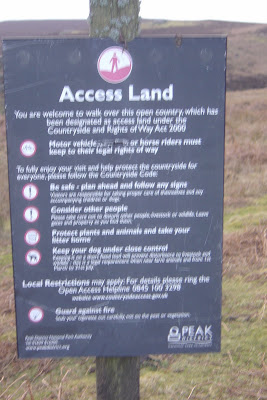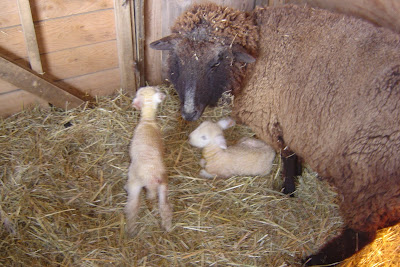



I flew home to Britain last Tuesday. I didn't blog about it at the time because I didn't feel the need to tell the world that Aimee would be alone in the farmhouse. My wife is not exactly a defenseless woman, but there have been a number of home invasions around Maine this winter, and so I chose not to write about it.
Now that I'm home, I can catch up.
The main purpose of my visit was to visit old folks, my mum in her nursing home, and my uncle in Sheffield. Both are very frail, but my uncle, at 78, has all his "marbles" and can hold up his end of a conversation better than some of my students. My mother, who is the same age (they're cousins, not brother and sister), has lost nearly all of hers, and so my sister and I have had to come to terms with the fact that some of the time, an increasing amount of time, she doesn't know who we are.
This facet of senile memory loss is surprising, and when it first happened it was a terrible shock, but you can get used to it and learn to deal with it.
People do what they have to do.
Mother can still chat a little and smile and tell fragments of old family stories, and even occasionally crack a joke. But her frailty has increased dramatically these last few months, while her memory is a little worse each visit.
While I was visiting, I was able to do a few things for myself and for
auld langs syne. Mother can only visit for forty minutes to an hour at most before she needs to nap, and so I had the rest of each day to myself more or less. I also did some traveling, to go from south Wales where mother and sister live, to the northern city of Sheffield, where we're all from, and where my uncle lives.
That trip gave me a chance to revisit the area around Burbage and the Longshaw Estate. Part of the Peak District National Park, but also part of the City of Sheffield, this is an important area for outdoor recreation.
I grew up on the edge of the city just five miles away, in the Mayfield Valley, the valley of the
Porter Brook. The Burbage and Stanage Moors are the watershed for the Porter Brook.
When I was a kid, but old enough to wander free, I would hike and cycle all over this moorland country. Later, it was a training ground for RAF Mountain Rescue Teams. The teams would stay in a "bothy" behind the Fox House pub, right on the edge of the moor.
My family had a long association with these lands in other ways. My paternal grandfather George William Womersley was part of the movement for public access during the 1930s and took part in the famous
Kinder Trespass which took place on Kinder Scout, a few miles to the west, and which secured my rights to roam over these moors. He was the organizer of the Sheffield contingent to the trespass, and a Labour activist. Thanks to my sister's research, I have some of his writings, written for the magazine of the Clarion Ramblers Club, a left-wing group that went on to provide intellectual leadership to the Sheffield area during the period of reconstruction after the war. The free access to moorland country enjoyed today by the British people is owed to activists like him.
The other branch was more conformist. My maternal grandfather Arthur Holden Watson was born in one of the Ivy Cottages, a famous local beauty spot right by the Wire Mill Dam on the Porter Brook, which drains the eastern side of the Burbage moors, and from that base he and his large number of siblings and their offspring survived the World Wars I and II and the Great Depression, providing much manpower for the defense of the realm, including several private soldiers, my grandfather (who served as a private in both wars), various NCOs, a brevet major, and a navigator for an RAF Mosquito squadron. Before, after, and between the wars, my grandfather and great-grandfather were master gardeners for the big Mayfield Valley houses that were then being built by Sheffield's industrial tycoons. In particular my grandfather served the Leigh family, whose head was at one point the Master Cutler of Sheffield.
When Arthur married my grandmother Lettie (Leticia) Jones (a housemaid from Pennal, near
Macynlleth, Wales where the
Centre for Alternative Technology today resides), his best man was "Uncle" Sid, Sidney Brammar, no blood relation but whom I called Uncle Sid nevertheless, because that's the usage in the Sheffield area.
Sid was also a Clarion Rambler.
The Clarions helped organize the purchase of the
Longshaw Estate for recreation and conservation purposes by the City of Sheffield, and Sid became one of the forestry workers on the estate. They planted several hundreds of acres of trees, including the areas pictured. At that time, just before World War II, trees were being planted all around the country to provide pit props for coal mines. The worry was that a German blockade would cut off supply of pit props, and interrupt the coal supply.
So while I was there to visit my uncle, I took a number of good long hikes around the estate, exercising both my legs, and, incidentally, the access rights my family fought so hard for.
The pictures show, from the top, the view from Higger Tor to Carl Wark. Both are prominent gritstone outcrops on Burbage Moor. (A
tor in old Celtic is an outcrop of rock.)
Carl Wark has a stone wall just visible in the second picture, which seems designed to prevent access from the west, and so this particular
tor may have been used as a hill fort at one time or another.
I've often wondered just how likely it is that some of my
other relatives fought the Romans from the Carl Wark hill fort. The occupants would have been Celtic and pre-Celtic Bronze and Iron Age people. They retreated to mountain
refugia in the west, what is now Wales, when first the Romans and then the Saxons invaded what is now England. So, if it's true, the most likely line of descent is through my Welsh grandmother.
The chances I share a mitochondrial genome with a former occupant of Carl Wark and the surrounding area two to three thousand years ago are modest but substantial.
Sid's woods are shown in the third picture, framing the eighteenth century packhorse bridge across the brook. The estate foresters planted Scot's pine and larch for the most part, but the trees grew only slowly by Maine standards. These trees are seventy-eighty years old, and none were over twenty-five feet yet. We have seven-year old ash trees that tall on this farm here in Maine.
The reason for the slow growth is visible in the shot below.

The soils on the moorland are peat soils, over
millstone grit bedrock. The peat is of course an old forest soil and dates back to the time, when the hill fort was built, when a thick hardwood forest would have stood on this site. With the trees long ago cut down for fuel, the forest soil becomes waterlogged and then preserved as peat.
Peat is acid and that makes it infertile. You can plant trees on peat, but they won't grow well unless you disturb the rocky substrate underneath to release more basic rock to neutralize the acid, and to release other nutrients. But millstone is a sedimentary rock made from layers of sand, and so low in nutrients. Regeneration would have been less and less prolific as years went on. Heavy grazing by sheep would have made sure that the forest never grew back.
In this photograph you can also see the sooty layer from the time of the industrial revolution until air pollution control and the demise of heavy industry in Sheffield and Manchester allowed a more recent clean layer, also visible, to form. The soot would not have helped the trees much, either. Burbage Edge, in fact, hosted a grindstone quarry, still visible, using the millstone grit to make the grinding wheels that would have been used in the water-powered operations along the
Porter Clough.
And so, long story short, Sid's trees grew only slowly. Even so, they have begun to transform the soils, the micro-climate, and thus the ecology of the Burbage valley. I heard woodpeckers and an owl, observed much finer grass species on the edge of the woods, replacing the coarse, acid-loving sedges of the moorland, and saw some natural regeneration occurring here and there within and on the edge of the woods.
There are also remnants of a more natural forest cover on the Longshaw Estate. Up high under parts of Burbage and
Stanage Edges are small pockets of an indigenous oak forest, with holly, ash, birch and hawthorne. One day, perhaps, if the grazing pressure is reduced, the remnant woodland will grow to meet with the plantation and the forest will stretch across the valley again.
I'd like to see that.
Like the forest we have here in Maine, in other words. Sid never saw the Maine woods, but he did live and work in Australia for many years after the war (where he and Aunty Kath started a family: his children and grandchildren are Australians), and so he may have recognized late in life the value of the work he was doing earlier: the ecological restoration of the valley of Burbage Brook.
I would often meet him up here on the moors. Almost every weekend he and Kath and the Clarions would be up here hiking around. I'd be up by myself or with the Mountain Rescue and I'd run into Sid and Kath and we'd have a natter.
But that was before I got myself an ecological education, and so I never had the opportunity to talk over these trees with him.
But it's an interesting and a wonderful thing to me how the natural ecology of woodland and moorland is intertwined with the human ecology of family, of rather grand political drama like the World Wars, and with land use of different kinds.





















